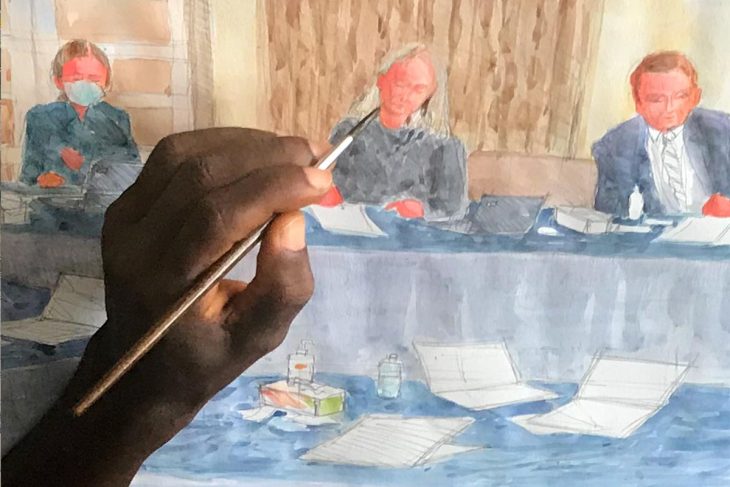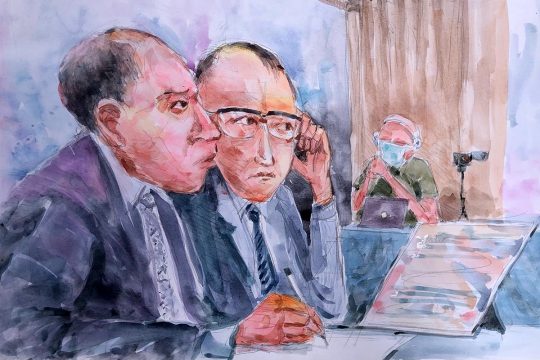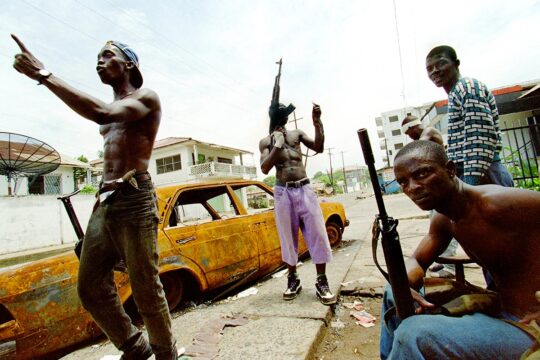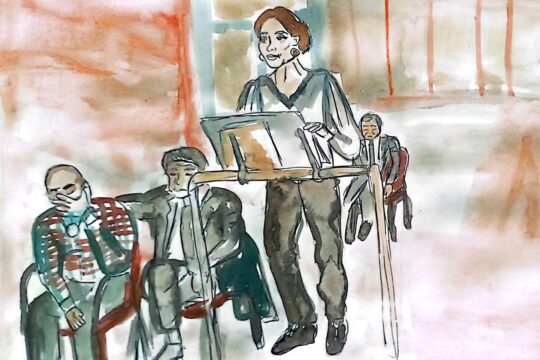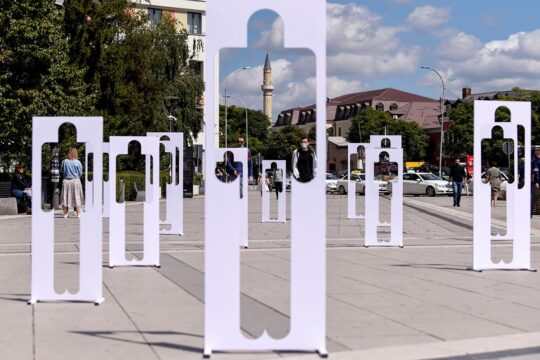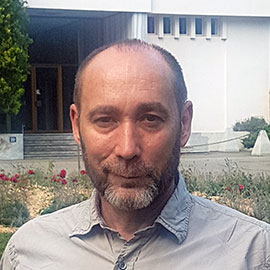"Civilian 08", so code-named by the Finnish police, is a 52-year-old man of solid build, with a muscular neck, thick grey eyebrows, and long eyelashes that give his eyes the brightness of smoked quartz. He appeared in a sober djellaba, skullcap and sandals on March 8 before the Finnish court temporarily relocated to the Liberian capital Monrovia. "Civilian 08" is a nurse. In the early 2000s, he was selling medicines and providing basic health care in the downtown Waterside shopping district near the Old Bridge. It was there that serious abuses took place - summary executions, torture, rape - which victims attribute to "Angel Gabriel," aka Gibril Massaquoi.
Massaquoi denies ever having had this nom de guerre, refutes any presence at the scene and presents an alibi defense. His lawyer has repeatedly pointed out the witnesses' contradictions with themselves or each other about when the attack in Waterside took place. According to the defence, the deadly incident could only have occurred in the final months of the civil war, between May and August 2003. At the time, Massaquoi was living in a safe house in Freetown, the capital of Sierra Leone, as a protected witness in a UN tribunal - a fact that is well known and supported by much evidence in the case file.
Double-edged testimony
It was the defence that called the nurse to testify in court. In his statement to investigators in 2019, he had mentioned a specific date to place the events at Waterside: June 20, 2003. He is the only witness to put forward a clear date. He said he remembered it because that was the day he wrote a letter to the Doctors Without Borders team, whose offices were not far away in Mamba Point, requesting emergency medical assistance for the influx of wounded.
But the letter is not in the file, and at the hearing the case seemed less clear. The nurse was much more vague about the date or the period. He first mentioned 2001-2002, then 2002-2003, then early 2003. And he stated, at the expense of the defence, that "most of the wounded patients were crying somebody’s name, and this name was Massaquoi. I don’t know this person, I didn’t see him, but every time I treated a wounded person they were crying this name." “They said the man was so wicked," he added.
The facts the medic described were entirely consistent with the accounts of the 19 direct victims who appeared. "Civilians were looking for food, that’s why they broke into this [biscuit] store. There was no food, no supply. The LURD [Liberians United for Reconciliation and Democracy, the armed group whose offensive led to the August 2003 fall of President Charles Taylor] was putting pressure on the government."
The lawyer asked him for more details. "The war was almost at an end. In June-July, victims told me what happened and I found it was true because I was treating them. I received most of the wounded from the biscuit store and treated them. And that happened in 2002-2003," said the nurse, who remembered treating about 30 people that day. These were gunshot wounds, he said. The nurse said he also rescued Major Focko, an army officer and sector commander who was wounded while trying to protect civilians. He too, according to the witness, was talking about "the same Massaquoi”.
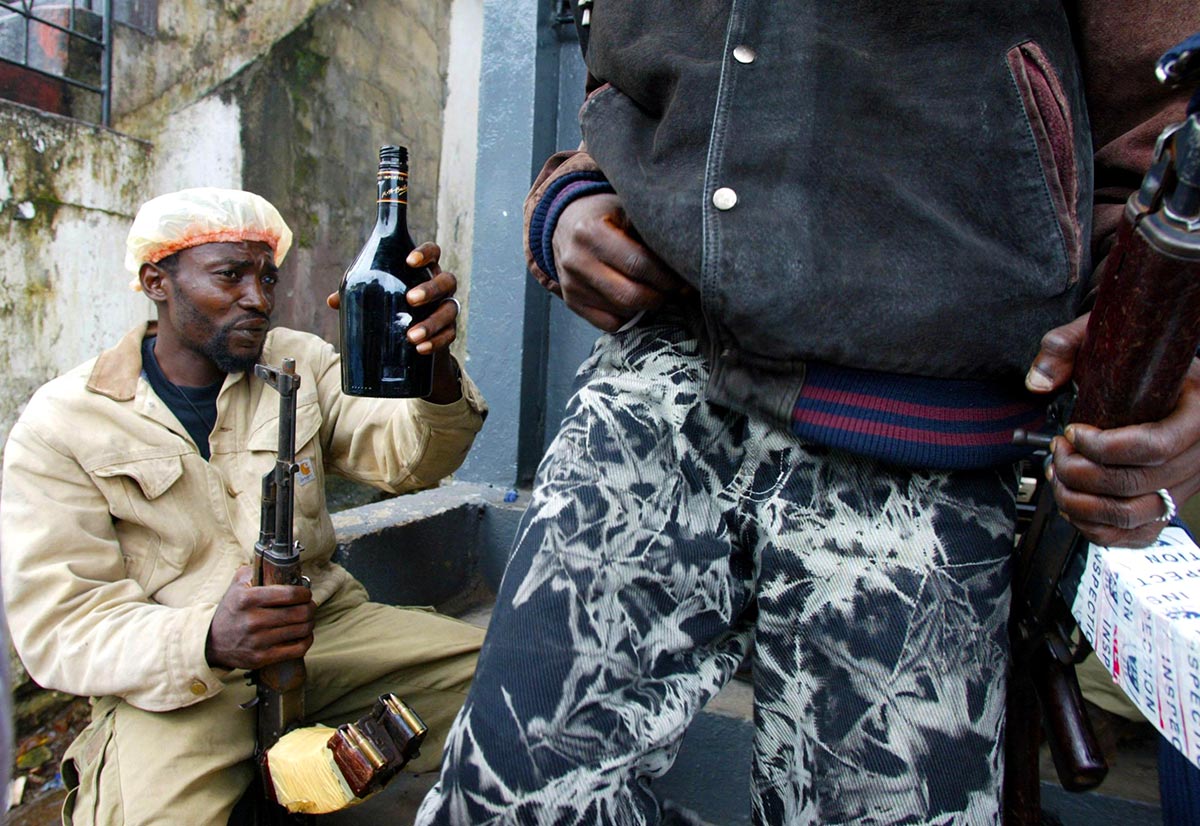
Dancing around a date
Defence lawyer Kaarle Gummerus returned to the date, which is crucial for the alibi.
-“The LURD rebels were throwing missiles at us," said the nurse.
- When?
- 2000-2003.
Gummerus tried to bring the nurse back to June 2003. But moments later, the witness put the LURD attack back to 2002. "There isn’t a single mention in the [police] summary about 2001-2002," the lawyer said, quoting the witness' statement to investigators: "In June 2003, there was a massacre, six people were shot." Faced with his own statements, the witness confirmed that it was indeed the massacre at the biscuit store.
- “Did it happen in 2003?” continued Gummerus.
- “The narrative that was told to me [by patients] was 2003," said the nurse.
On the day of his appearance in court, "Civilian 08" was twice bereaved. The court released him early and on March 16, he was back in court. He was the last witness to testify about what happened in Waterside, which had occupied the court since its hearings in Monrovia began on February 23. The defence took the opportunity to go on the offensive again. "The incident was in June 2003," the nurse now stated more firmly.
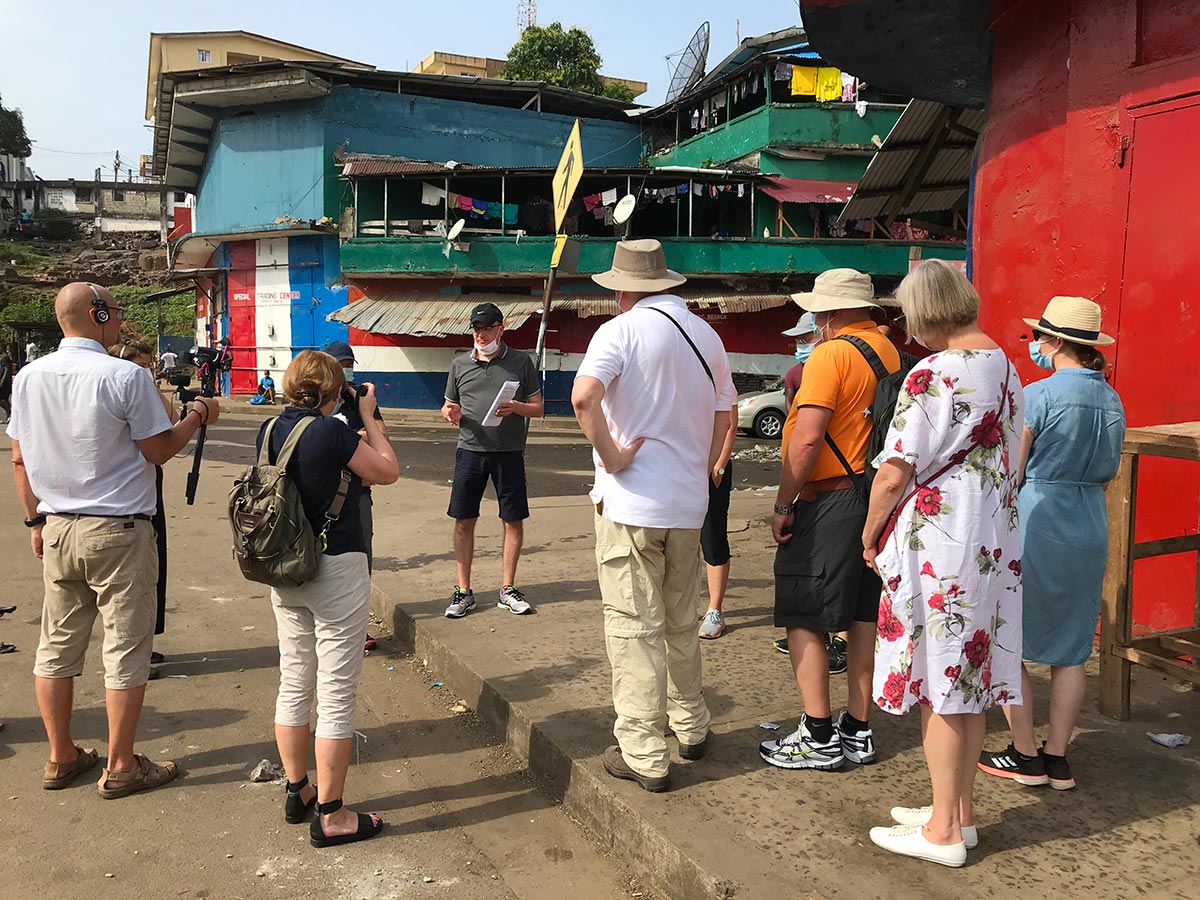
In the RUF guesthouse in Monrovia
The other witness presented in this first part of the trial is "Civilian 09", who is not a victim of the alleged events. His judicial code name does not fit him well. In the early 2000s, "Civilian 09" was actually a bodyguard for Foday Sankoh, the historic leader of the Revolutionary United Front (RUF), the Sierra Leonean rebellion of which Massaquoi was a commander and spokesperson. It was the defence that requested, during the investigation, that this former RUF member be questioned. But it was the prosecutor who finally called him to the witness stand on March 10.
"Civilian 09" told of being assigned, after the peace accords between the RUF and Sierra Leonean government in July 1999, to guard a guesthouse in Monrovia, made available to the RUF by their Liberian ally President Charles Taylor. The witness' task was to receive RUF commanders who stayed there. Starting in 2000, Massaquoi was regularly there on a "diplomatic mission", he said. The witness spoke of meetings between RUF leaders and the Liberian president. He spoke of missions by road or helicopter to Voinjama and Kolahun in Lofa County, in the far north of the country, on the borders with Guinea and Sierra Leone. "At the time," he said, "some RUF soldiers came from Sierra Leone to help Charles Taylor," who was by then threatened by a new rebellion, the LURD, launched from Guinea in 1999.
On two occasions, "Civilian 09" himself went to Lofa County with Massaquoi. That was in early 2001, he reckoned, but other missions took place as early as 2000. "The intention was to go and fight there because the enemy was in that area." These missions lasted three or four days, sometimes a week. They carried weapons, provided by the Liberian presidency and paid for in diamonds by RUF leaders, the witness added. Massaquoi took part in the fighting, he said.
What happened after the end of 2001?
"Civilian 09" claimed to have left Liberia with Massaquoi at the end of 2001, and returned to Sierra Leone by road, via Foya. He returned to Monrovia in February 2002, but when asked if Massaquoi also returned, he said, "I don't remember".
The testimony of the former RUF member already seems to anticipate the rest of the trial, which relates to crimes committed in Lofa in the years 1999-2003. But it also has relevance to the alleged crimes in Monrovia and to the alibi of the accused. "Civilian 09" explained that some RUF fighters were attached to the Anti-Terrorist Unit (ATU) in Monrovia, which witnesses implicated in the attack in Waterside. "Any fighting activity taking place in Monrovia and the surroundings, they used to send them there to fight," he said. "Was Massaquoi one of them?" the prosecutor asked. "The only time I know of was in 2000 or 2001, when he was going to Lofa. But I can’t remember if he took part in any activities here in Monrovia," he replied. "What happened was when Sam Bockarie [former RUF number 2] and the RUF had a falling out, that's when Sam Bockarie left the RUF and came to Monrovia with some men."
- Did Massaquoi come with him?
- No.


